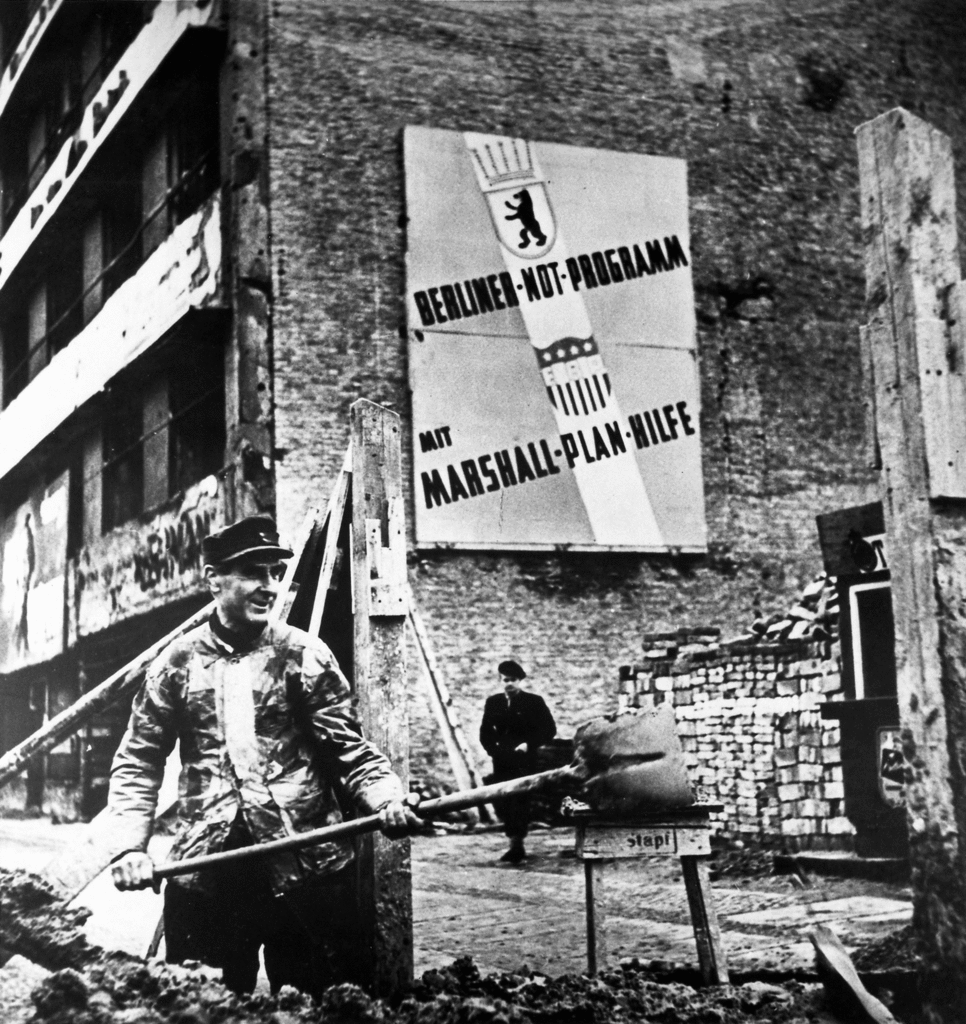 Rebuilding the world has to rank at the top of economic low-hanging fruit of the last century. The U.S. played a large role in piecing together the shattered globe in the wake of WWII. Yes, four decades of unfortunate tax rates, globalization and the demise of unions have all abetted the decline of the American middle class, but just as true is that the good times simply ended, the job completed (more or less), the outlier running out of energy. That was essentially the key lesson of Thomas Piketty’s Capitalism in the Twenty-First Century.
Rebuilding the world has to rank at the top of economic low-hanging fruit of the last century. The U.S. played a large role in piecing together the shattered globe in the wake of WWII. Yes, four decades of unfortunate tax rates, globalization and the demise of unions have all abetted the decline of the American middle class, but just as true is that the good times simply ended, the job completed (more or less), the outlier running out of energy. That was essentially the key lesson of Thomas Piketty’s Capitalism in the Twenty-First Century.
It’s not that high growth and high productivity are completely impossible today, but those circumstances may not now move the masses even if they were to occur. Postwar technologies replaced some workers but complemented many others, and the reverse may be true of our new tools.
In his Wall Street Journal “Saturday Essay,”: former Economist editor Marc Levinson speaks to this topic, arguing that neither liberals nor conservatives are capable of markedly boosting productivity and that “secular stagnation” may just be business as usual. An excerpt:
The quarter-century from 1948 to 1973 was the most striking stretch of economic advance in human history. In the span of a single generation, hundreds of millions of people were lifted from penury to unimagined riches.
At the start of this extraordinary time, 2 million mules still plowed furrows on U.S. farms, Spanish homemakers needed ration books to buy olive oil, and in Tokyo, an average of three people had to cook, eat, relax and sleep in an area the size of a parking space. Within a few years, tens of millions of families had bought their own homes, high-school education had become universal, and a raft of government social programs had created an unprecedented sense of financial security.
People who had thought themselves condemned to be sharecroppers in the Alabama Cotton Belt or day laborers in the boot heel of Italy found opportunities they could never have imagined. The French called this period les trente glorieuses, the 30 glorious years. Germans spoke of the Wirtschaftswunder, the economic miracle, while the Japanese, more modestly, referred to “the era of high economic growth.” In the English-speaking countries, it has more commonly been called the Golden Age.
The Golden Age was the first sustained period of economic growth in most countries since the 1920s. But it was built on far more than just pent-up demand and the stimulus of the postwar baby boom. Unprecedented productivity growth around the world made the Golden Age possible. In the 25 years that ended in 1973, the amount produced in an hour of work roughly doubled in the U.S. and Canada, tripled in Europe and quintupled in Japan.
Many factors played a role in this achievement. The workforce everywhere became vastly more educated. As millions of laborers shifted from tending sheep and hoeing potatoes to working in factories and construction sites, they could create far more economic value. New motorways boosted productivity in the transportation sector by letting truck drivers cover longer distances with larger vehicles. Faster ground transportation made it practical, in turn, for farms and factories to expand to sell not just locally but regionally or nationally, abandoning craft methods in favor of machinery that could produce more goods at lower cost. Six rounds of tariff reductions brought a massive increase in cross-border trade, putting even stronger competitive pressure on manufacturers to become more efficient.
Above all, technological innovation helped to create new products and offered better ways for workers to do their jobs.•
Tags: Marc Levinson
